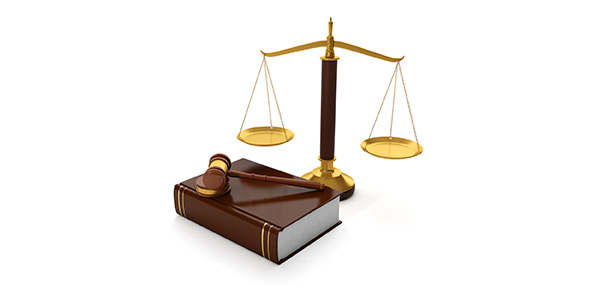Related Flashcards
Related Topics
Cards In This Set
| Front | Back |
|
R v Hanson
|
(1) Where the prosecution relies on the
defendant’s propensity to commit offences, there are three questions to be
answered:
(i) Does the history of convictions establish a propensity to commit offences of the kind charged? (ii) Does that propensity make it more likely that the defendant committed the offence charged? (iii) Is it unjust to rely on the conviction of the same description or category, and, in any event, will the proceedings be unfair if they are admitted? (2) Propensity is not confined to offences of the same description or category. As such s.103(2) is not exhaustive of the types of convictions which might be relied on to show evidence of propensity to commit offences of the same kind. Equally, simply because an offence falls within the same category or description is not necessarily sufficient to show propensity (3) There is no minimum number of convictions that are required to show propensity. The fewer the number of convictions, the weaker the evidence of propensity is likely to be. (4) Regarding judicial discretion to exclude, it should be kept in mind the degree of similarity between the convictions and the offence charged, the respective gravity of the offences, the strength of the prosecution’s case (5) Old convictions are likely to have an adverse effect on the fairness of the proceedings. (6) Each individual conviction must be considered, not merely looking at the defendant’s record as a whole (7) The importance of correctly directing the jury is stressed, in any case where bad character evidence is admitted, the jury should be instructed not to place undue reliance on bad character evidence |
|
R v Randall
|
It was not entirely clear which of the
co-accused had inflicted the final, fatal injury in an allegation of murder.
Each blamed the other. Co-Accused A sought to introduce B’s previous
convictions for serious violence to suggest that B was more likely to have
inflicted the fatal injury. The key factor is whether there is substantial
probative value on an important matter in issue between the co-defendants.
|
|
R v Varley
|
It has to be decided whether the evidence either
supports the prosecution case in a material respect or undermines the defence
of the co-accused
In relation to undermining a co-accused’s defence, care must be taken to see that the evidence clearly undermines the defence. Inconvenience to or inconsistency is not sufficient |
|
R v Ball
|
Gateway G extends to the defendant’s comments at
the police station
Comments that the witness is a ‘slag’ or lying amount to an attack on the character of another |
|
R v Highton
|
The Use of Bad Character : ‘Once the evidence is
admitted, it may, depending on the particular facts, be relevant not only to
credibility but also to propensity to commit offences of the kind with which the
defendant is charged’
This is further supported by R v Campbell in which it is stated that once bad character is admitted it can be used for any purpose for which it assumes relevance |
|
R v Vye
|
The court gave clear guidance as to the relevant
principles to be applied and the approach that a trial judge should take when
directing a jury as to the relevance of a defendant's good character. This case
is the basis for the term "Vye direction".
(a) A direction as to the relevance of a defendant's good character to his credibility was to be given where he had testified or made pre-trial answers or statements; (b) A direction as to the relevance of a defendant’s good character to the likelihood of his having committed the offence charged was to be given, whether or not he had testified or made pre-trial answers or statements; (c) Such directions were to be given even where a defendant of good character was jointly tried with a defendant of bad character; (2) (a) In giving a direction about a defendant's propensity to act as alleged by the Crown, the trial judge should tailor his direction to the particular circumstances. He would probably wish to indicate, as was commonly done, that good character could not amount to a defence. Provided that the judge indicated to the jury the two respects in which good character may be relevant, namely, credibility and propensity, the Court of Appeal would be slow to criticise any qualifying remarks he might make based on the facts of the individual case; (b) There was no rule in favour of separate trials for defendants of good and bad character. The possibility of separate trials was a matter for the trial judge and to be decided in accordance with well-established principles. Generally, those jointly indicted should be jointly tried. |
|
R v Z
|
The Crown appealed
against the Court of Appeal's refusal to admit similar fact evidence on the
basis that it pointed towards the guilt of the defendant in respect of offences
of which he had been previously acquitted. It was submitted that there were
significant similarities between the defendant’s previous conduct and that
forming the subject of the current charge making, such evidence admissible
under the similar facts rule. The court held that, the evidence was admissible
as it did not place the defendant in a double jeopardy position as he was not
being prosecuted on the same facts which had earlier given rise to acquittals.
|
|
R v Sully
|
A judge had been correct to admit a defendant's previous convictions as bad character under the Criminal Justice Act 2003 s.101(1)(d),
despite their being over 30 years old, since they had relevant factual
similarities to the offence charged and were of sufficient probative
force.
|
|
R v Varley
|
Where one
defendant asserts or in due course will assert a view of a joint venture which
is directly contradicted by the other, that contradiction may amount to
"evidence against" that defendant.
(1) evidence "against" a co-defendant was evidence which supported the prosecution case in a material respect or undermined the defence of that defendant |
|
R v Renda
|
S105(3)
allows D to withdraw assertion
|
|
R v Smith
|
that (1)
often the first enquiry of the court was whether it was necessary to go through
the bad character gateways at all. In this regard s.98 was not to be
overlooked. It excluded from the definition of bad character evidence which had
to do with the alleged facts of the offence, or evidence of misconduct in
connection with the investigation or prosecution of that offence.
|
|
Selvey v DPP
|
When the defence attacks the character of a
prosecution witness, the judge has an unfettered discretion, under the Criminal
Evidence Act 1898 s.1(f) (ii) , to admit or exclude evidence as to the previous
record or character of the accused and to allow cross-examination thereon.
There is no general rule that such evidence and cross-examination cannot be
admitted and allowed if the defence necessarily involves imputations against
the witness's character.
(1) that the judge had a discretion to allow the evidence of previous offences to be adduced; (2) that since the conduct of the complainant was vital to the case, the judge had exercised his discretion correctly; and (3) that the failure to prove the previous record formally was not a ground for allowing the appeal, since the jury were entitled, in the circumstances, to treat the defendant's attitude as an admission of the offences. |
|
R v Burke
|
Where D's defence to a charge of possessing
cannabis with intent to supply was, in effect, that four police officers
conspired to concoct a case against him, that evidence was planted in his house
and that two officers made up contemporaneous notes of an interview the trial
judge correctly exercised his discretion in allowing D to be cross-examined
about previous convictions for possessing cannabis, and a large amount of cash
found in D's house on an earlier occasion.
That the imputations made against the prosecution witness were such that the trial judge had jurisdiction to permit D to be cross-examined about his previous convictions. |
|
R v Randall
|
Where two defendants were jointly charged with a
crime and each blamed the other for its commission, one defendant could rely on
the more significant criminal propensity of the other in order to prove his
innocence.
|







